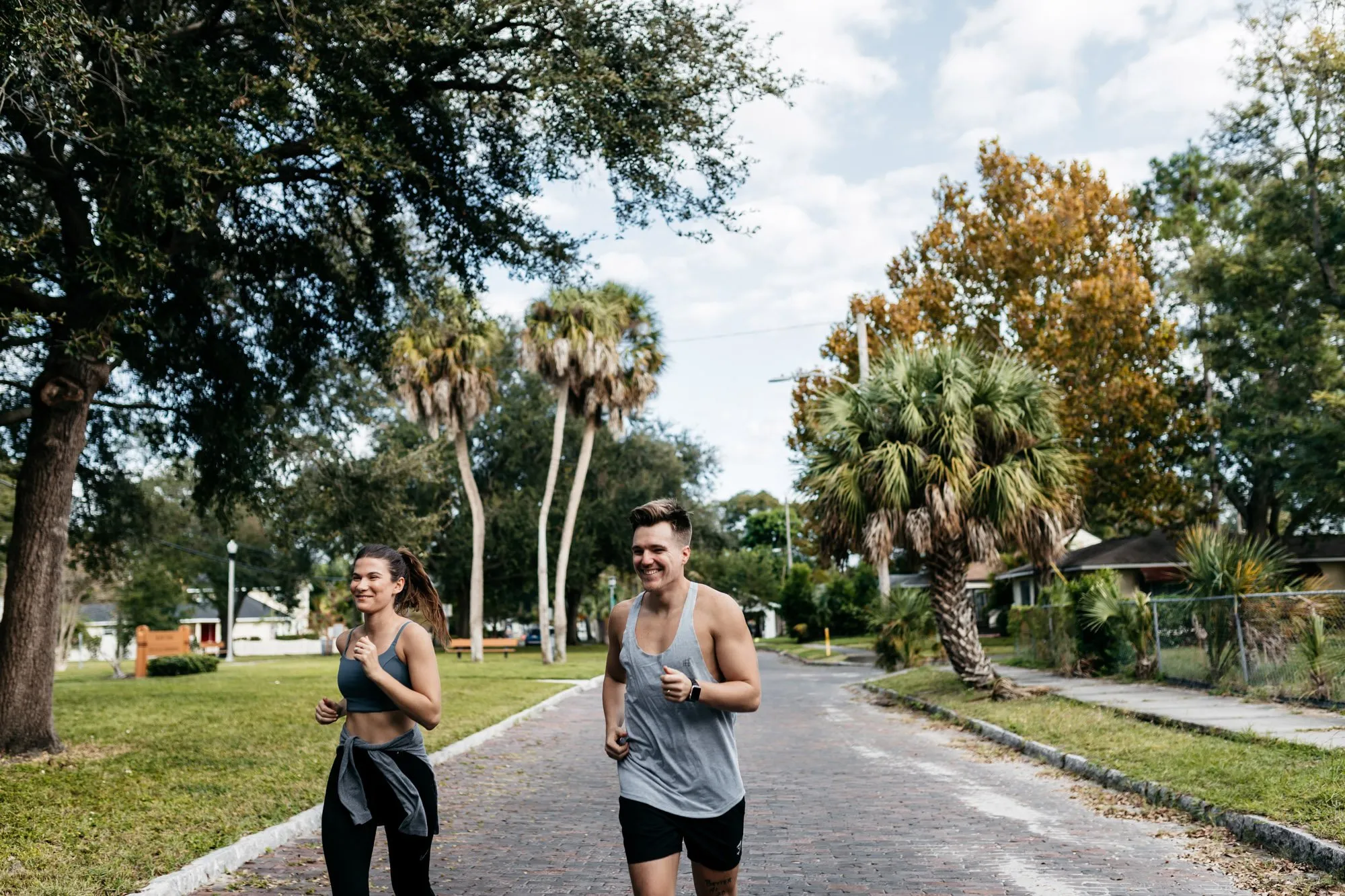Is there a reliable way to prevent shin splints? Though they might not necessarily go away overnight, shin splints can be warded off or minimized over time with some key preventative measures. If you’re struggling to progress as a runner because of painful or uncomfortable shin splints, we’ve got you covered with some of our top tips for targeting them. Let’s go ahead and get started.
Don’t Forget Strength Training
A common mistake people make when working on their running, whether it’s their mile time or their endurance, is to forgo strength training. The reality is that strength training is an important part of physical health, especially if you’re taking on a demanding regimen. Shin splints are caused by shock and stress on your shin bone and its surrounding tissue, and the way to prevent shin splints is to reduce that shock level as much as you can. That might mean switching up your running environment so that you can train on a softer surface, but it should also mean strengthening the muscles in your leg so that your shins aren’t taking on the brunt of the pressure. By strengthening your quads, hamstrings, and calves, you’ll help to more evenly distribute the impact that hits your legs when you run, which will help to minimize the discomfort you feel.
Gradual Progress is Best
Don’t give yourself an inch only to take a mile. Whether you’re a seasoned runner or are just starting off, it is crucial to strike a balance between pushing yourself and pacing yourself. Gradual improvement over time is steadier and healthier than the undue stress you place on your body by attempting times and distances you may not be ready for. Ultimately, your progress will be more sustainable if you commit yourself to pursuing it over time. How can you tell you’re pushing yourself enough without overstressing your body? Well, shin splints might be a sign that it’s a good idea to dial back a little bit. A good rule of thumb is to not increase your running volume more than 5-10% per week. Ultimately, though, the only person who can help you accurately determine the right limits – and the right times to push yourself – is a specialized physician or physical therapist.
Get Great Shoes
Your shoes matter. In fact, we can’t stress enough how important good shoes are to not only your experience as a runner, but to the way that running impacts your body. If you’re training in your go-to gym shoes or haven’t bought new shoes in a long time, consider making a trip to a specialized running store as soon as possible. Get recommendations from a trusted professional – preferably one who is familiar with your health circumstances and goals – and invest in a great new pair of sneakers. You’d be surprised at what a massive difference they can make. A great place to visit in St. Petersburg is St. Pete Running Co.
Work with a Professional to Improve Your Form
Ultimately, the best decisions you can make when it comes to running and physical health in general are informed ones, and that means working with a physical therapist. A doctor of physical therapy will help you determine the root cause of your pain or discomfort, then come up with a treatment plan that doesn’t just alleviate the pain, but that sets you up for more success in your fitness journey over time. If you’re wondering what you can do to prevent shin splints while improving your running metrics, the answer is to work with a trusted physical therapist.
If you want to prevent shin splints and progress as a runner, working with a physical therapist is your best option – and we’re here to help. Set up our first evaluation with Dr. Ken Clark by clicking here.


